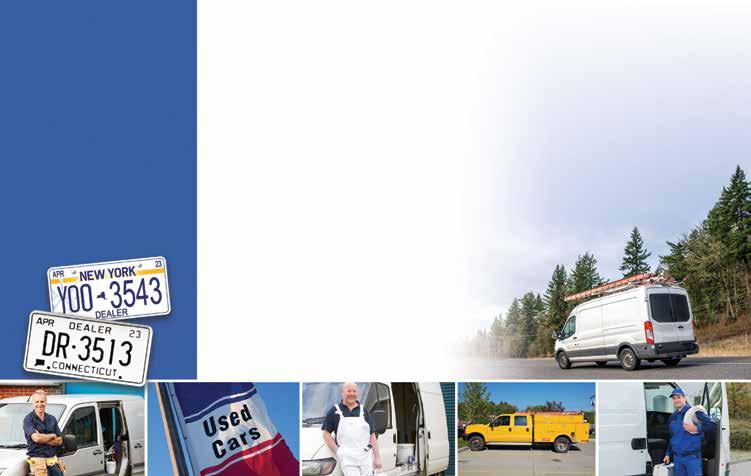
4 minute read
E&O
Clear up misconceptions about hurricane coverage
Considering past catastrophic weather events, insurance agents, property owners, and the general public can benefit from a crash course on insurance coverages for these types of events. Such storms seem to be more frequent and more severe in their scope of damage and aftermath.
There are some frequently misunderstood or misinterpreted coverage issues or items that only seem to come to light after a catastrophe has occurred. These are areas that can lead to misunderstandings between agents and their clients—which can develop into uncovered losses and errors-and-omissions claims against the agent who handled the insured’s coverage before the loss.
Misunderstood coverage issues
Misunderstanding: Standard policies cover flooding. Property owners (personal/homeowners and commercial/commercial property policy) tend to think their regular property coverage includes damage caused by flooding, such as the type experienced in Texas from the effects of Hurricane Harvey in 2017. Fact: Most homeowners and commercial property policies sold in the United States specifically exclude coverage for flood damage. Less than 10% of the property owners in Texas who sustained flood damage from Hurricane Harvey had flood coverage on their buildings! Misunderstanding: Coverage is available after a flood. Many property owners tend to search for flood coverage for their property after an event— such as Hurricane Harvey and Hurricane Irma in 2017—only to be disappointed that they cannot immediately purchase flood coverage. Fact: The National Flood Insurance Program has a mandatory 30-day waiting period before coverage will become effective. Note: This does not include a policy scheduled for a mortgage closing transaction. These are applied effective for the closing date. Misunderstanding: Deductibles. There always is confusion with flood policyholders regarding their deductible(s). Depending on what coverage was purchased, there may be two deductibles that will come into play after a loss. For this fact, let’s assume that a homeowner has purchased an NFIP policy and he or she has elected to have both building and contents coverage under the policy. Fact: Flood coverages are considered separate in regard to application of the deductibles. There would be a deductible for the building structure damage and a deductible for the contents that are damaged. The deductible amounts are chosen when the application is completed by the insured when he or she applies for coverage.
Misunderstanding: Loss-of-use
coverage. Often there is confusion after a policyholder files a claim under an NFIP policy for loss-of-use coverage for personal lines, or business income interruption coverage for commercial lines. These coverages are included under regular personal or commercial policy types and are sometimes mistakenly assumed to be on the flood policy as well. Fact: The NFIP policy does not offer any type of loss-of-use coverage under the personal (dwelling form) coverage or any business income interruption coverage under the commercial (general property form) coverage forms, respectively.
Misunderstanding: Windstorm
coverage. Another CAT coverage matter that often creates issues for insureds with sustained damage from a hurricane event is whether homeowners policies include windstorm coverage within their scope of coverage for an insured’s property. In some coastal areas, many homeowners carriers will exclude windstorm coverage altogether on the policy. This causes the property owner to have to purchase a separate windstorm policy as it will be
E&O
required by the mortgage holder and it’s a coverage necessity, especially in coastal areas due to the hurricane-wind exposure. Therefore, a homeowner may either have windstorm coverage included with the homeowners policy or it may be excluded and a separate policy fills the need. In either case, there usually are multiple deductible applications that come into play for coverage for any loss from windstorm damage. Fact: Most coastal windstorm policies (standalone or included with the homeowners coverage) have a regular deductible of a chosen dollar amount (e.g., $500 or $1,000) for non-CAT types of losses, and then they have a separate deductible for CAT types of losses, and the policy language varies with
Email> Keep these addresses handy to reach PIA electronically
General pia@pia.org
Conference conferences@pia.org
Design + Print design.print@pia.org
Education education@pia.org
Government & Industry Affairs govaffairs@pia.org
Industry Resource Center resourcecenter@pia.org
Member Services memberservices@pia.org
Publications publications@pia.org
Young Insurance Professionals yip@pia.org
116889 different carriers as to how it will apply. Typically, the CAT deductible is a percentage of the total insurable value of the building and it usually is reserved for named storms that cause the damage, but not always. For example, if the building value is $500,000 and the windstorm named-storm deductible is 5% of TIV, the property owner’s deductible for a named-storm loss would be $25,000. As mentioned above, the policy language may vary from carrier to carrier and from state to state, so your agency staff members and your insureds should know and understand the differing deductibles that may be on homeowners or individual windstorm coverages. Helping to better educate your insureds can enable them to be aware of exposures they might not have known existed, and then they can address those exposures by purchasing the proper types of coverage. Utica National Insurance Group and Utica National are trade names for Utica Mutual Insurance Company, its affiliates and subsidiaries. Home Office: New Hartford, NY 13413. This information is provided solely as an insurance risk management tool. Utica Mutual Insurance Company and the other member insurance companies of the Utica National Insurance Group (“Utica National”) are not providing legal advice, or any other professional services. Utica National shall have no liability to any person or entity with respect to any loss or damages alleged to have been caused, directly or indirectly, by the use of the information provided. You are encouraged to consult an attorney or other professional for advice on these issues. © 2022 Utica Mutual Insurance Company




